Being self sufficient in a small space is much easier (and enjoyable) than you might think. Here are our top tips for anyone thinking of growing their own produce this spring.
A few years ago, I knew nothing about gardening. It seemed like a useful but time-consuming hobby: too much hard work and too much information to take in. Then I moved to a small farming community in the mountains of southern Spain, where old men wearing flat caps still use mules to plow the earth, and everyone in the village has their own vegetable garden, or huerto.
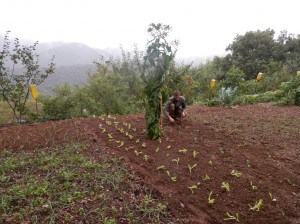
Neighbors in the village would bring me gifts of fat orange carrots and juicy red tomatoes fresh from the earth, and I realized with horror that I had never tasted real food until then. Making a decision to grow my own produce was the next logical step, and I was surprised to discover it was much easier than I had ever imagined. Not only that, I found getting muddy in the garden was so relaxing it was almost zen-like, not to mention rewarding and fun. On top of the pleasure it brings and the knowledge that I´m contributing to a global back-to-basics food revolution, growing my own produce has saved me a lot of money and enabled me to provide a constant supply of delicious healthy food for my family.
Most people don´t have the luxury of a plot of land or big garden, but much of what I´ve learned can be applied to city center apartments with only a small balcony or yard. With food prices at an all time high and increased public concern over GMOs, growing what little you can in a small space is the best way to re-connect with nature while boycotting supermarkets in a pro-active way.
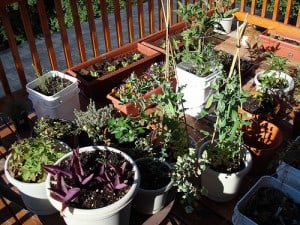
Please note that all the methods explained here were chosen for their simplicity, but there are various approaches to urban gardening and other people may use different methods (and different plants) than those I cover here. Gardening is a learning process: experimentation is essential to find out what works best for you and your plot. I´ve avoided using words like permaculture, bio-intensive, bio-dynamic, hydroponics and so on, because I think sometimes as a beginner these terms can only make things more confusing. I´m also a firm believer in grasping the bare basics and then learning through experimentation and getting your hands dirty! Also, since True Activist readers live all over the world, I recommend that you do your own research for specific planting times for your climate. Spring in southern California or southern Spain comes earlier than spring in the UK or Canada for example, so it´s worth checking out guidelines for where you live.
Choosing suitable plants
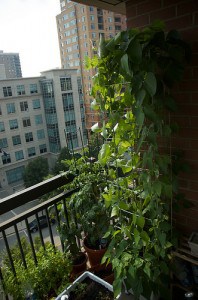
Plants that grow upwards, rather than spilling out across the earth are the best ones to cultivate in a confined space. In spring (between March and May depending on climate), you can plant cucumbers, corn, tomatoes, climbing beans, eggplant and peppers, which don´t require much ground space and are all easy to grow. These plants will thrive with lots of sunlight, but many of them can survive even in a shady spot- here is some useful advice for gardeners who have this problem.
Corn can be planted directly in the ground, but the others will do better if they are first grown in seed trays and left indoors, only ´transplanted´ when the seedlings are sturdy and strong (around 10-15cm tall). Make sure the last frost of the year is well and truly over in your area before placing seedlings outside!
Potatoes are usually grown in the ground, but experimentation has taught me that they do just as well in sacks full of earth which you can place on a balcony. Recycled buckets, as used in this Dallas project, will also do fine. Simply save a few old (organic) potatoes, and when the shoots have grown to around 3cm, cut the potato into quarters and place each piece inside a sack, as done here.
Chili peppers, cooking herbs, lettuce, radishes, spinach and beet can also be planted soon for summer, and will thrive even in window-boxes and small pots. Hanging baskets can also be used to make the most of your space.
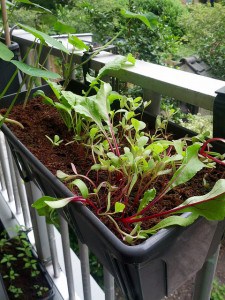
Other easy-grow crops are garlic (best to plant in fall), onions, broccoli and pumpkins – the latter seem to take over the garden of their own accord, and require pretty much no maintenance whatsoever (they do need a little more ground space, though, so would only be suitable for a bigger plot).
The links provided for each crop will give you more detail about soil and sunlight conditions, as well as how and when to plant. As for where to find these seeds, I find the easiest thing to do wherever possible is to take seeds from an organic specimen and then dry them for a day or two on a piece of tissue paper. This works for any seed-based plant: cucumbers, tomatoes, peppers, pumpkins, as well as strawberries (also great for small spaces) and other fruits. For seedless plants, you can buy organic seeds online or from an online seed bank; I would also recommend finding out if there are any free exchanges in your local area to save money (and connect with other green-fingered folk!)
Soil and fertilizers
As a beginner, even getting your head around the various different types of soil can be a headache. Of course different plants have their own requirements to thrive, but mostly it´s common sense: make use of what you have in the local area (where possible) and keep an eye on your seedlings as they grow, making sure the soil doesn´t become too dry and learning from observation what they need. If the earth in your area is too gritty or clay-based, you might need to purchase soil, but any gardening store should be able to advise you on this.
Organic fertilizers are a good idea, and if it´s not possible to get hold of any manure, you can use any plant-based waste to give nutrients and moisture to your soil (a process called mulching) . This could include
wood chips, pine needles, bark, leaves, or compost mixes made from any leftover fruit and vegetable peelings. I usually dig a hole, fill a quarter of the hole with manure or mulch, then add a little more soil before placing the plant in the earth and repeating this process (mulch, then soil again to the top).
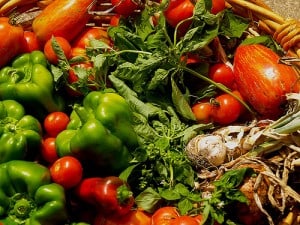
Lunar gardening
The waxing and waning of the moon doesn´t only affect the tides; it affects soil moisture, tree sap, and everything else (including the water in our bodies). The idea of using the moon´s cycles to plant, prune and harvest may sound crazy to some, but it´s a method that has been used in rural Spain (and hundreds of other cultures) for generations, with amazing results. I can personally testify that even if you are skeptical, starting your new hobby with a lunar gardening calendar to help you out will make the whole process much easier, and will pretty much guarantee you success (whether you believe in it or not!).
The best calendar I´ve found can be bought online from Lunar Organics* here. Unlike some other highly complex charts I´ve seen elsewhere, Lunar Organics´calendar divides plants into four basic categories: roots (anything that grows underground), fruits (including vegetables) that grow above ground), leaves (lettuce, herbs, spinach etc) and flowers. The calendar is very simple to use and is color-coded to show you when best to sow and harvest these ´families´, which is great for total beginners and disorganized gardeners alike! It also comes with a handy guide to planning your space and an introduction to companion planting (see below), which is an excellent way of repelling pests and being kind to the earth without using any chemicals.
* Please note, this is a UK company. It does ship to the USA and other countries, but you will have to adjust the GMT times given on the chart to your specific timezone.
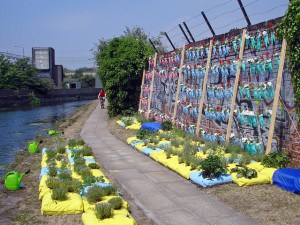
Companion planting and pest control
One of the best organic methods of pest control I´ve found is to collect nettles, soak them in a compost bin half-full of water until they reach a mulch consistency, then simply apply the mixture around the base of the plants. The toxicity of the nettles seems to deter most garden pests, as well as acting as a great fertilizer. Beer placed in sunken cups around the base of the plants will trap any unwanted slugs, but if you don´t like this method you can also loop copper wire around the bases to deter them instead.
Companion planting is based on the idea that certain plants thrive best when they are grown together. Since different plants give and take different nutrients to and from the earth, and since tall plants (such as sunflowers) offer shade to those which need it (such as tomatoes), this is a great way of avoiding chemicals and working in harmony with nature. Beans grow well with cucumbers and beets, for example, while tomatoes like being close to herbs, garlic and peppers. A handy list of all companions (and those which you should avoid grouping together) can be found here.
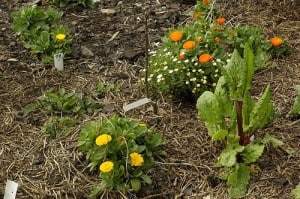
Companion planting is also a great method of pest control. Marigolds, for example, repel a wide range of pests – I try to plant one flower next to every seedling, and would swear by this method. Herbs and flowers can also repel or attract various insects, so it´s well worth checking this list out before deciding what to plant where. Tomato flies don´t like lettuce, so planting these around the vines will help increase your crop, while sunflowers (another great addition to a balcony garden) repel aphids. Finally, plant as many flowers as you can to attract bees:
Lunar Organics sells a great seed mix with hardy, easy to grow flowers, chosen specifically to help our furry friends in their fight for survival.
Sophie is an award-winning feature writer and journalist. She is a staff writer for True Activist on issues of peace, justice, society, environment and activism. You can find out more or contact her here.


